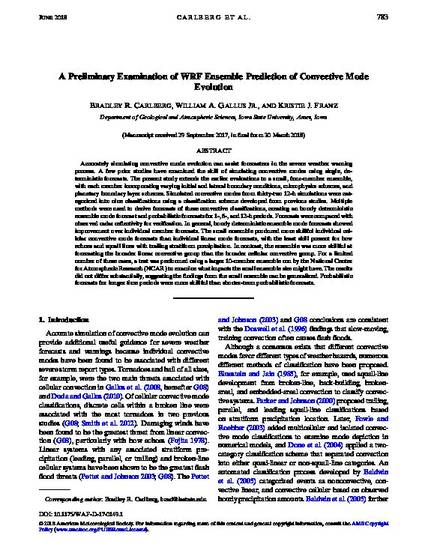
Accurately simulating convective mode evolution can assist forecasters in the severe weather warning process. A few prior studies have examined the skill of simulating convective modes using single, deterministic forecasts. The present study extends the earlier evaluations to a small, four-member ensemble, with each member incorporating varying initial and lateral boundary conditions, microphysics schemes, and planetary boundary layer schemes. Simulated convective modes from thirty-two 12-h simulations were categorized into nine classifications using a classification scheme developed from previous studies. Multiple methods were used to derive forecasts of these convective classifications, creating an hourly deterministic ensemble mode forecast and probabilistic forecasts for 1-, 6-, and 12-h periods. Forecasts were compared with observed radar reflectivity for verification. In general, hourly deterministic ensemble mode forecasts showed improvement over individual member forecasts. The small ensemble produced more skillful individual cellular convective mode forecasts than individual linear mode forecasts, with the least skill present for bow echoes and squall lines with trailing stratiform precipitation. In contrast, the ensemble was more skillful at forecasting the broader linear convective group than the broader cellular convective group. For a limited number of these cases, a test was performed using a larger 10-member ensemble run by the National Center for Atmospheric Research (NCAR) to examine what impacts the small ensemble size might have. The results did not differ substantially, suggesting the findings from the small ensemble can be generalized. Probabilistic forecasts for longer time periods were more skillful than shorter-term probabilistic forecasts.
Available at: http://works.bepress.com/william_gallus/70/

This article is published as Carlberg, Bradley R., William A. Gallus Jr, and Kristie J. Franz. "A Preliminary Examination of WRF Ensemble Prediction of Convective Mode Evolution." Weather and Forecasting 33, no. 3 (2018): 783-798. doi: 10.1175/WAF-D-17-0149.1.